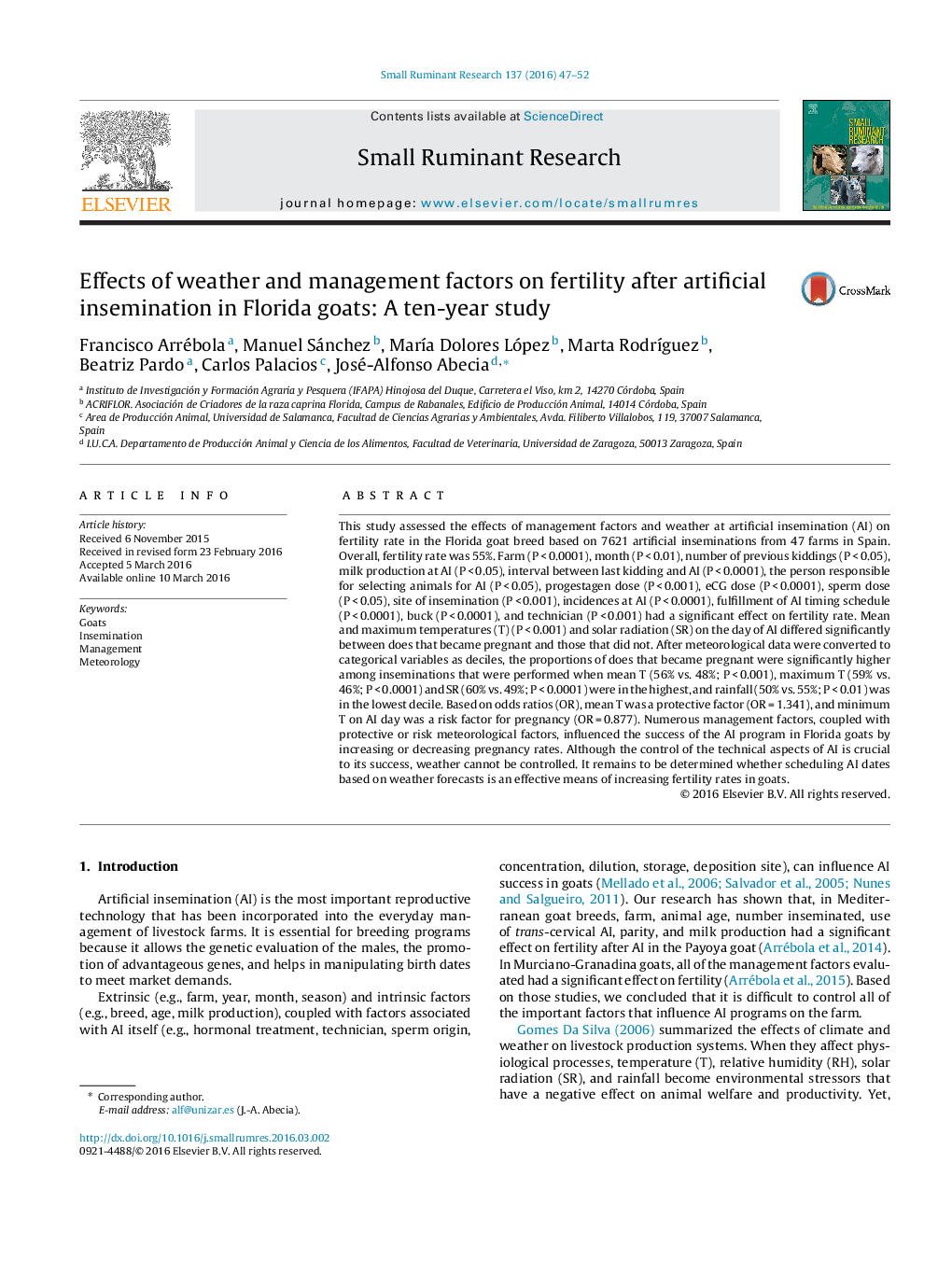| کد مقاله | کد نشریه | سال انتشار | مقاله انگلیسی | نسخه تمام متن |
|---|---|---|---|---|
| 2456771 | 1554355 | 2016 | 6 صفحه PDF | دانلود رایگان |
• The effect on fertility of management and meteorological conditions at insemination was studied.
• Fertility was 55%; most of the management factors affected significantly this percentage.
• Some meteorological factors were related with pregnancy success.
• It remains to be determined the usefulness of weather forecast before insemination dates.
This study assessed the effects of management factors and weather at artificial insemination (AI) on fertility rate in the Florida goat breed based on 7621 artificial inseminations from 47 farms in Spain. Overall, fertility rate was 55%. Farm (P < 0.0001), month (P < 0.01), number of previous kiddings (P < 0.05), milk production at AI (P < 0.05), interval between last kidding and AI (P < 0.0001), the person responsible for selecting animals for AI (P < 0.05), progestagen dose (P < 0.001), eCG dose (P < 0.0001), sperm dose (P < 0.05), site of insemination (P < 0.001), incidences at AI (P < 0.0001), fulfillment of AI timing schedule (P < 0.0001), buck (P < 0.0001), and technician (P < 0.001) had a significant effect on fertility rate. Mean and maximum temperatures (T) (P < 0.001) and solar radiation (SR) on the day of AI differed significantly between does that became pregnant and those that did not. After meteorological data were converted to categorical variables as deciles, the proportions of does that became pregnant were significantly higher among inseminations that were performed when mean T (56% vs. 48%; P < 0.001), maximum T (59% vs. 46%; P < 0.0001) and SR (60% vs. 49%; P < 0.0001) were in the highest, and rainfall (50% vs. 55%; P < 0.01) was in the lowest decile. Based on odds ratios (OR), mean T was a protective factor (OR = 1.341), and minimum T on AI day was a risk factor for pregnancy (OR = 0.877). Numerous management factors, coupled with protective or risk meteorological factors, influenced the success of the AI program in Florida goats by increasing or decreasing pregnancy rates. Although the control of the technical aspects of AI is crucial to its success, weather cannot be controlled. It remains to be determined whether scheduling AI dates based on weather forecasts is an effective means of increasing fertility rates in goats.
Journal: Small Ruminant Research - Volume 137, April 2016, Pages 47–52
